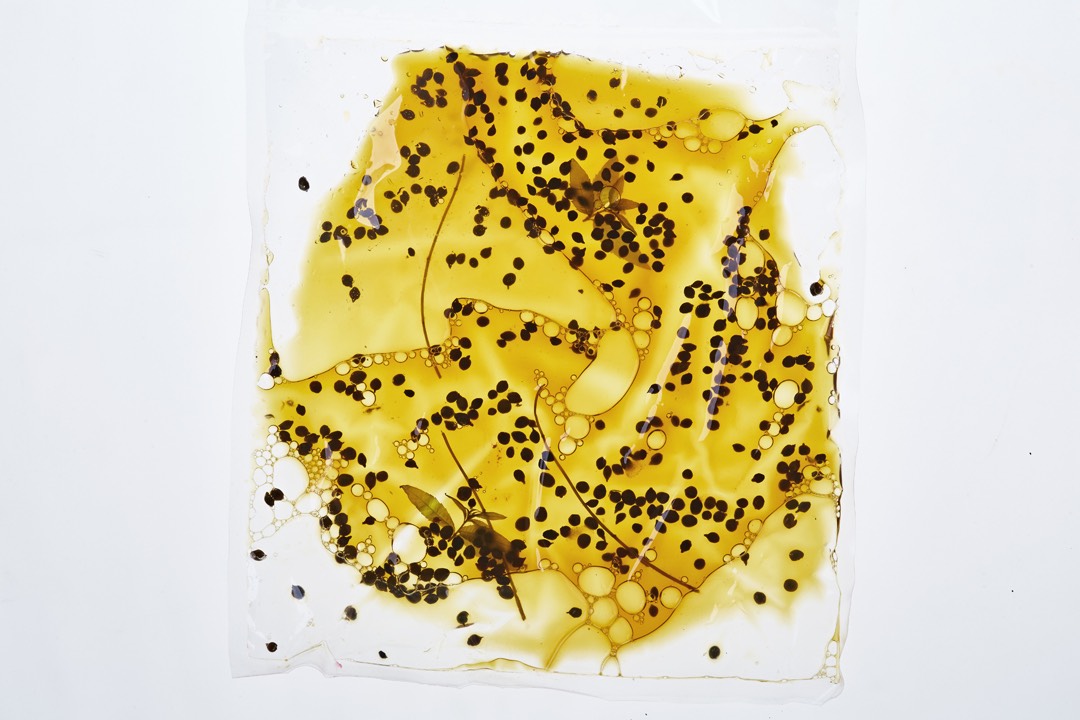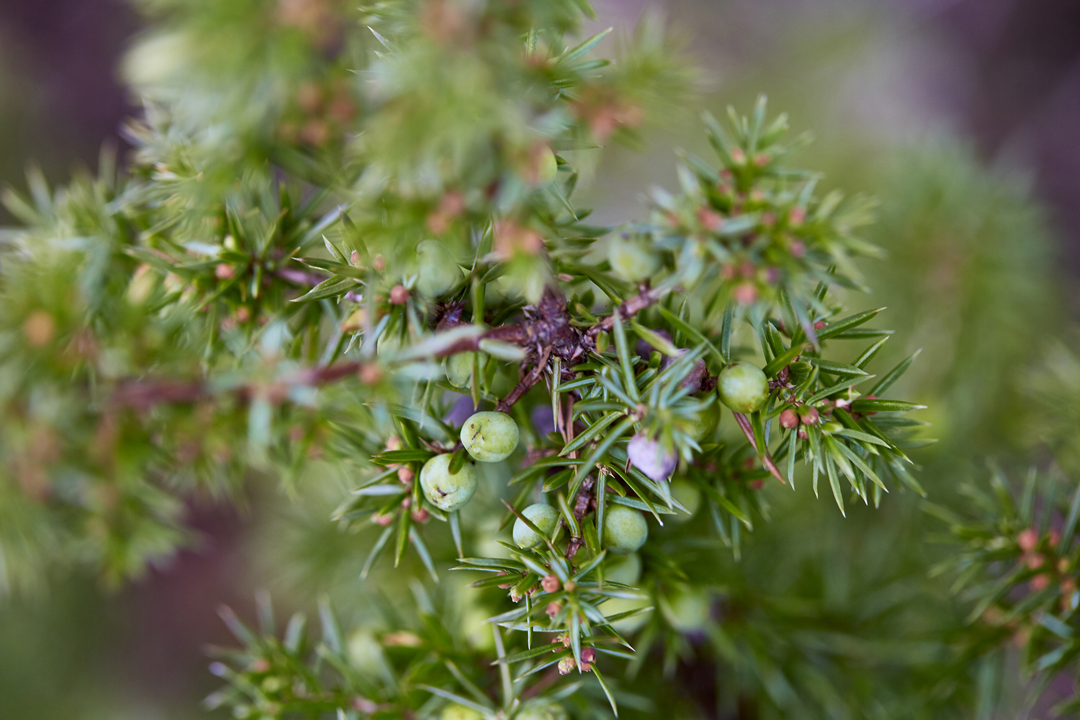
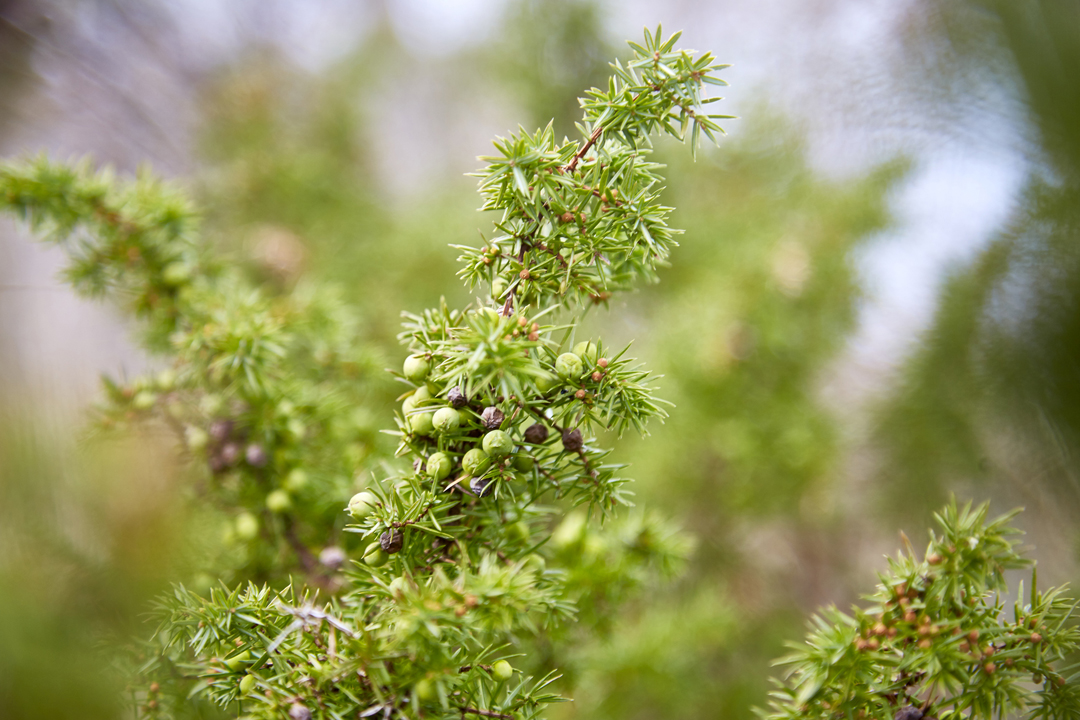
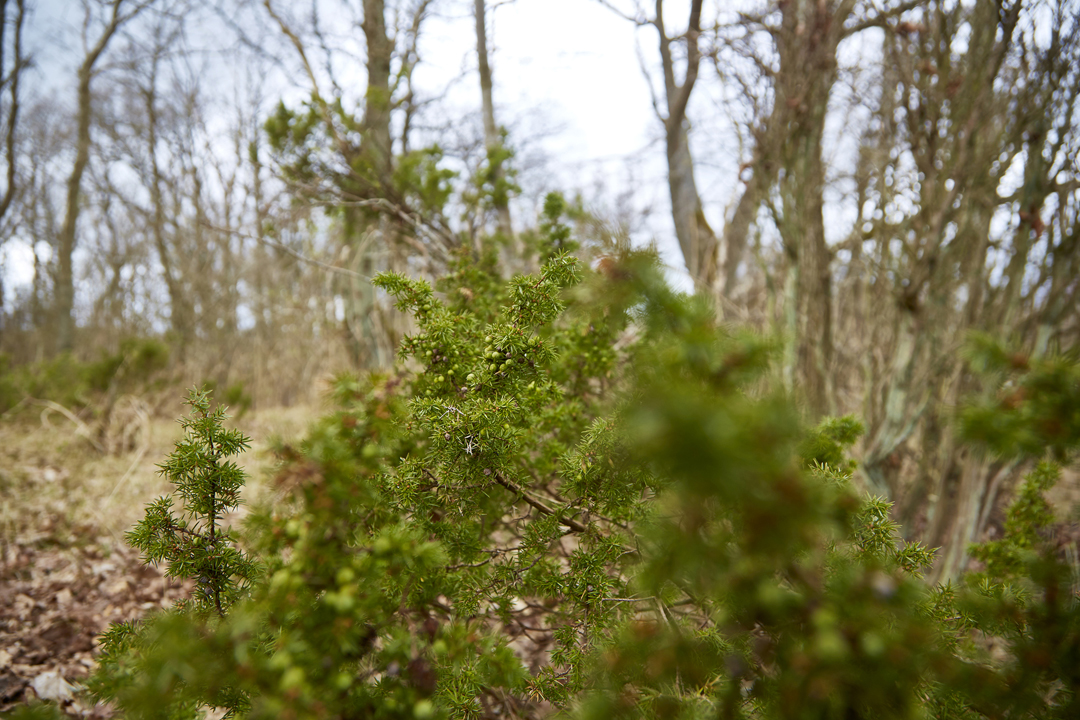
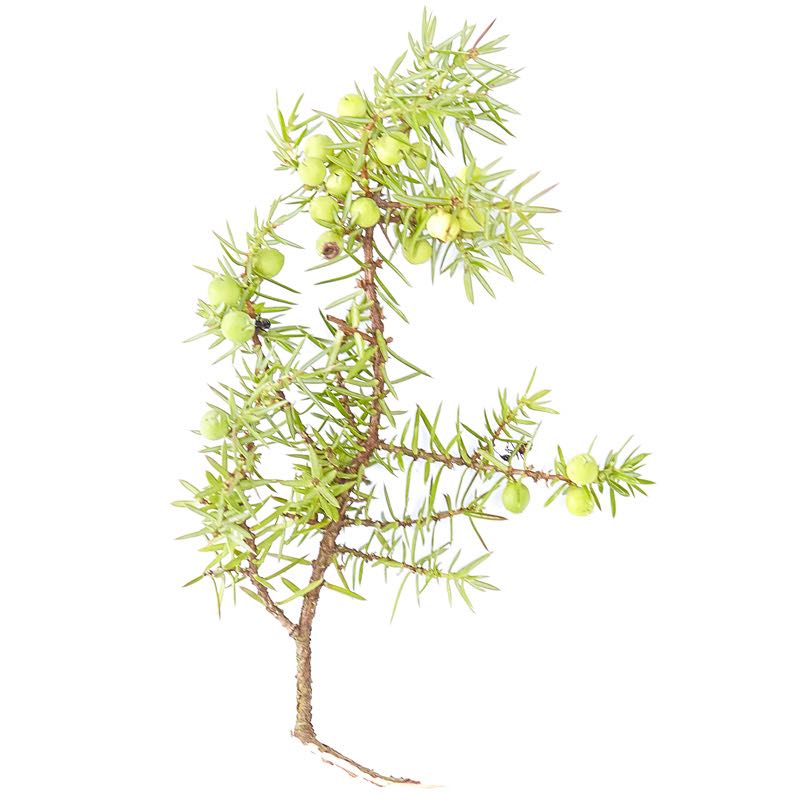
Juniper
Juniper is one of the few original Scandinavian coniferous trees and it's played a culinary role since at least the Viking age, when it was used in making mead. It's still used to flavor alcohol—especially gin—but can do a lot more than just that.
-
Where to Find It
Juniper thrives on heaths and similarly sandy areas where it resists the elements to grow in patches of green shrubbery or as small, erect trees. It doesn't need much in the way of nutrients, but juniper does require good light, so look for it in wide-open spaces with ample sunshine, and where the wind has free reign.
Grasslands. -
When to Find It
The berries can be picked year round.
Berries: January, February, March, April, May, June, July, August, September, October, November, December. -
How to Spot It
Juniper is an evergreen bush or small tree with very pointy, bluish-green needles that grow in threes in a ring around its branches. The trees can grow up to four or five meters tall and sometimes have several trunks that grow closely together. Depending on how they're shaped by the elements, the trunks may be more horizontal than vertical. The bark is thick, reddish-brown, and on older trees it tends to flake off in large, elongated pieces. Dark blue berries are distributed throughout the branches. In May and June juniper blooms with green or yellow flowers.
-
How to Pick It
Juniper berries are actually small, meaty cones that have ripened on the branches over the course of several years. The green berries that grow side-by-side with the blue, ripe ones are also cones—they just haven’t ripened yet. Because ripe and unripe berries, intermingle promiscuously with flowers on the same branch, you’ll need to pick by hand.
Risk of misidentifying the plant
When seen from a distance, juniper can easily be confused with thuja or cypress, which don't have prickly needles, but short, scale-like leaves that grow densely close to the stem. Each scale has a white spot on the bottom, and overlaps another. Cypress isn't toxic (just inedible), but all parts of the thuja tree contain a poisonous substance called thujone, which you don't want to ingest.


